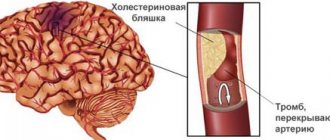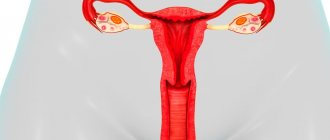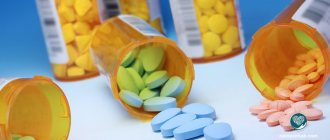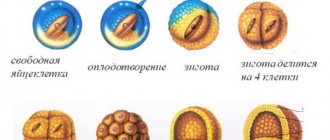Disruption of the blood supply to certain areas of the brain leads to irreversible damage. A stroke can be ischemic - when tissues are deprived of oxygen for a long time, and hemorrhagic, occurring as a result of rupture of blood vessels with the release of blood into the surrounding space. Both conditions are deadly and require urgent medical attention. The first hours after an attack are decisive.
Precursors of stroke in women
Stroke occurs more often in women than in men.
Signs of an impending stroke in women:
- limbs move worse or do not move, weakness in the arm and leg on one side;
- weakness, drowsiness, increasing headache, which leads to nausea, lethargy;
- decreased sensation in a limb or one side of the body;
- impaired speech perception and ability to speak;
- loss of balance, ability to navigate in space.
Types of disease
There are quite a large number of types of stroke. The classification of the disease includes division according to the provoking causes, the mechanism of progression, and the characteristics and size of the lesion.
Usually the following types are distinguished:
- ischemic;
- extensive;
- hemorrhagic;
- lacunar;
- microstroke;
- spinal;
- repeated;
- spicy.
Ischemic stroke is considered the most common. The cause of the pathology may be a disruption in the transport of nutrients and oxygen to brain cells (usually due to narrowing of vascular channels).
Hemorrhagic stroke is a consequence of rupture of the vascular channels of the brain, as a result of which blood fills the cavities. This type entails the appearance of edema and hematoma.
A major stroke is any massive lesion. Typically, such a lesion has more severe symptoms and often leads to death or long-term disability of the patient.
Classification by severity
Based on the severity of clinical manifestations and the severity of brain damage, stroke can be divided into the following subtypes:
- transient ischemic attacks;
- micro-stroke (usually formed against the background of third-party chronic pathologies - hypertension or thrombosis, lasts from 2 to 21 days);
- moderate severity (recovery from such a lesion takes several months, swelling of the brain structures and dysfunction of consciousness do not appear);
- extensive (the most severe subtype of all, since it is formed in the beds of large vascular canals, the symptoms are the most pronounced and can lead to paralysis or death of the patient).
Signs of a stroke
A stroke is localized in the brain or spinal cord.
It is divided into ischemic and hemorrhagic. In an ischemic stroke, part of the brain tissue dies due to circulatory failure. The hemorrhagic type occurs when the vessel wall is damaged and blood flows into the brain tissue. It occurs suddenly, more often during the day. It is preceded by a hypertensive crisis.
The first signs of a stroke in women:
- gradually increasing headache;
- weakness;
- speech disorder;
- vomit;
- loss of consciousness, coma;
- pupils of different sizes;
- frequent noisy breathing;
- weakness in the limbs on one side, paralysis in the arm or leg on one side (hemiparesis);
- speech disorder.
The stroke that occurs in older women (after 50-60 years) is in some way different from the one that develops in women 30-35 years old or 40-50 years old.
Difference between stroke in young and old age:
- The course of the stroke.
- Greater aggressiveness, pathology, and rate of damage to brain tissue in women over 70-80 years of age.
- In the consequences after a stroke in elderly women.
- How favorable the prognosis after a stroke can be for women over 60-80 years of age.
- Signs of stroke in young women.
How to recognize a stroke yourself?
After a stroke, every minute counts. The hemorrhage site increases in size. And after 3-6 hours, the brain tissue dies, and a focus of necrosis forms. Doctors have to deal with the consequences of pathology.
At home, you can use 3 recognition techniques, which are designated by the abbreviation UZP. The patient is asked:
- U - Smile.
Some patients cannot do this at all because the corners of the lips are directed downward. For others, the smile may be crooked. - Z - Speak.
Sometimes victims cannot even speak a simple sentence. But this symptom is not typical for all types of the disease. - P - Raise your arms up.
The upper limbs rise unevenly.
You can also ask the patient to stick out his tongue and close his eyes. A tongue that is crooked and sticks to one side is also a sign of poor circulation. Thanks to this technique, more than 90% of strokes were confirmed.
If a patient has at least one of 3 points not normal, then the probability of a stroke is 72%, if 3 - more than 85%.
During the examination, specialists ask the patient to lie on his back and raise both arms up or legs alternately. Again, the fact that the patient cannot keep her arms parallel to each other or raise them at all signals a brain disorder. You can find similar signs in yourself.
Reception of recognition IMPACT
Another way to recognize pathology is called IMPACT:
- U - Smile:
skewed; - D - Movement:
it is impossible to symmetrically raise the limbs; - A - Articulation:
impossible to pronounce words clearly; - R - Decision:
it’s time to take it if signs are detected and seek medical help.
Understanding from the signs that a person has apoplexy, it is pointless to provide him with first aid. Mistakes lead to fatal consequences. You need to call an ambulance as soon as possible and be sure to warn about the identified symptoms.
What to do while the ambulance is on the way?
A stroke can happen to anyone at any time. Therefore, you need to know the following algorithm of actions:
- put the victim on a bed with high pillows;
- provide oxygen flow;
- remove tight clothing that is constricting your chest;
- measure blood pressure;
- tilt the patient's head to the side if vomiting occurs.
All that remains is to wait for the ambulance.
First aid for stroke
It is impossible to determine the nature of a stroke in the first hours, therefore it is necessary to normalize vital functions (breathing, blood circulation) and ensure the prevention of possible complications (pneumonia, thromboembolism, bedsores).
The first step is to call an ambulance. It is advisable to reassure the patient and measure blood pressure. If there is vomiting, place the patient on his side and place his hand under his head. Do not bend your neck, because blood flow cannot be impaired. The airways need to be clear. In case of severe respiratory distress, mechanical ventilation must be started.
If breathing is impaired, it is necessary to free the patient from tight clothing. Free the oral cavity from foreign objects, mucus, and vomit. If the patient is indoors, access to fresh air is necessary. If a person is conscious, it is advisable to cheer him up and calm him down.
If you lose consciousness, you need to make sure that the person is not injured or bruised.
There is no need to take medications so as not to worsen the patient’s condition.
If it is not possible to call an ambulance, then you must transport the victim to the hospital yourself.
What is a stroke and what are its statistics in Russia?
This is a pathological condition caused by an acute cerebral circulatory disorder. The nature of the disorders can be different, hence the types of stroke. Most strokes are called ischemic. Almost 80% of total cases. In this situation, blood circulation stops in a certain area of the brain due to the presence of a blockage of blood vessels or a blood clot. The other part is associated with cerebral hemorrhages.
In Russia, almost half a million citizens suffer a stroke every year. Approximately 15% of those infected die. Statistics show that since 2014, data on the number of diseases has been increasing. I am glad that mortality rates are decreasing.
The international medical project Global Burden Diseases (GBD) conducted research on stroke statistics on a global scale. Results and analyzes were published in 2015. According to the statistics obtained, almost ten and a half million people suffer a stroke every year in the world. Two thirds of them are fatal. Deaths from stroke are 30% higher than fatal heart attacks.
Having such a disease and staying alive does not mean that the danger has passed. Another scary figure of 10% is repeated cases. And if in the first case the patient was saved, a second stroke in most cases leads to death. According to statistics, every fifth patient experiences the disease again. And among those who have it once, almost 45% die within one year.
If the consequences of the disease were not fatal, in most cases the patient becomes disabled. Only about 20% of those recovered return to work. In 60% of cases, a person’s health condition is such that he is able to take care of himself. And approximately 30% become completely dependent on outside help. Help is needed to perform basic activities: moving, eating, taking a bath. In almost all cases, communication problems arise. Dementia (acquired dementia) is on the list of particular consequences of a stroke. More than 90% of patients become depressed.
And, of course, the degree of improvement in health depends entirely on the recovery period and the efforts spent on rehabilitation. Thus, mechanotherapy helps restore tone to the leg muscles and promotes the development of walking skills. support load simulator “Corvit can provide good assistance here .
For better stimulation of movement, a virtual reality system is used. But the Regent medical suit is capable of affecting many muscles throughout the body. This is a highly effective rehabilitation tool for the active restoration of walking skills. Care, patience and painstaking care, and the help of loved ones together with the use of mechanical assistants increase the chances not only of survival, but also of a quality life.
The relationship between brain regions and the clinical picture of stroke
If the right lobe is affected, this is expressed by paralysis of the left limbs or loss of sensitivity in them.
The patient has a pronounced depressive state and a decrease in the desire for recovery. If the hippocampus area is affected, then the patient cannot grasp objects with his hand, loses the ability to navigate in space, cannot remember what happened yesterday, but memories of a longer period are preserved.
The hippocampus is responsible for emotions, short-term and long-term, spatial memory necessary for orientation in space.
If the left lobe is affected, then paralysis, decreased or loss of sensitivity in the right half of the body is characteristic, the patient does not perceive speech and speaks inarticulately.
If the cerebellum is affected, there is a lack of coordination, the patient feels nausea and dizziness. When the stem structures are damaged, the patient may experience double vision, the act of swallowing is disrupted, and involuntary movements occur.
Cause of development and risk groups
Stroke is one of the most serious diseases that occurs in the blood vessels of the brain. It leads to a serious disruption of blood circulation in any part of the circulatory network.
Since most of the functions of the human body are controlled by the nervous system, and it is, accordingly, controlled by the brain, any pathological processes and disturbances in its work will lead to failure of the motor processes of the limbs, paralysis or even death. Patients lose their speech, develop serious problems with memory and vision, and lose sensitivity and balance.
The risk group includes people suffering from the following disorders:
- hypertension;
- diabetes;
- obesity;
- elevated cholesterol levels;
- arrhythmia;
- sedentary lifestyle;
- hemophilia.
Women most often experience stroke after 60 years of age. Patients with factors that can provoke a stroke need to be especially careful. These include:
- regular severe stress;
- physical exhaustion or fatigue;
- blood pressure surges;
- changes in atmospheric pressure (if the patient is weather dependent);
- heavy alcohol intoxication;
- overheat;
- hypothermia.











